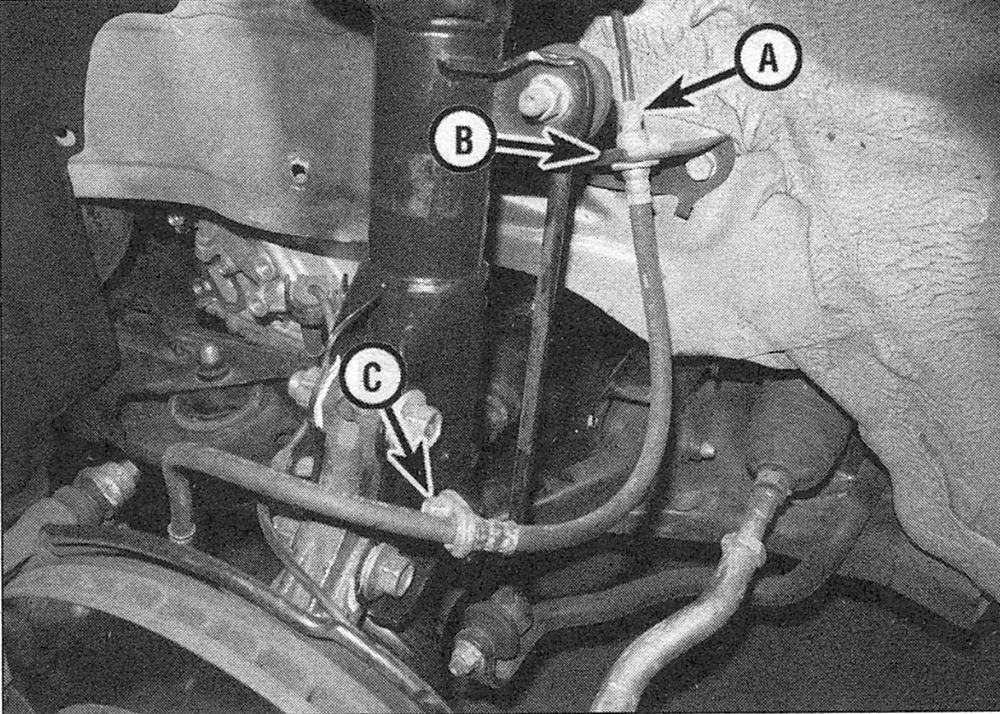Brake hoses and lines — inspection and replacement
1. About every six months, with the vehicle raised and placed securely on jack stands, the flexible hoses which connect the steel brake lines with the front and rear brake assemblies should be inspected for cracks, chafing of the outer cover, leaks, blisters and other damage. These are important and vulnerable parts of the brake system and inspection should be complete. A light and mirror will be needed for a thorough check. If a hose exhibits any of the above defects, replace it with a new one.
Flexible hoses
2. Clean all dirt away from the ends of the hose.
3. To disconnect a brake hose from the brake line, unscrew the metal tube nut with a flare nut wrench, then remove the U-clip from the female fitting at the bracket and remove the hose from the bracket (see illustration).
i.3 Unscrew the brake line threaded fitting with a flare-nut wrench to protect the fitting corners from being rounded off (A), then pull off the U-clip (B) with a pair of pliers and remove the brake line mounting bolt (C)

4. Disconnect the hose from the caliper, discarding the sealing washers on either side of the fitting.
5. Using new sealing washers, attach the new brake hose to the caliper.
6. To reattach a brake hose to the metal line, insert the end of the hose through the frame bracket, make sure the hose isn’t twisted, then attach the metal line by tightening the tube nut fitting securely. Install the U-clip at the frame bracket.
7. Carefully check to make sure the sus- pension or steering components don’t make contact with the hose. Have an assistant push down on the vehicle and also turn the steering wheel lock-to-lock during inspection.
8. Bleed the brake system (see Brake hydraulic system — bleeding).
Metal brake lines
9. When replacing brake lines, be sure to use the correct parts. Don’t use copper tubing for any brake system components. Purchase steel brake lines from a dealer parts department or auto parts store.
10. Prefabricated brake line, with the tube ends already flared and fittings installed, is available at auto parts stores and dealer parts departments. These lines can be bent to the proper shapes using a tubing bender.
11. When installing the new line make sure it’s well supported in the brackets and has plenty of clearance between moving or hot components.
12. After installation, check the master cylinder fluid level and add fluid as necessary. Bleed the brake system as outlined in Brake hydraulic system — bleeding and test the brakes carefully before placing the vehicle into normal operation.